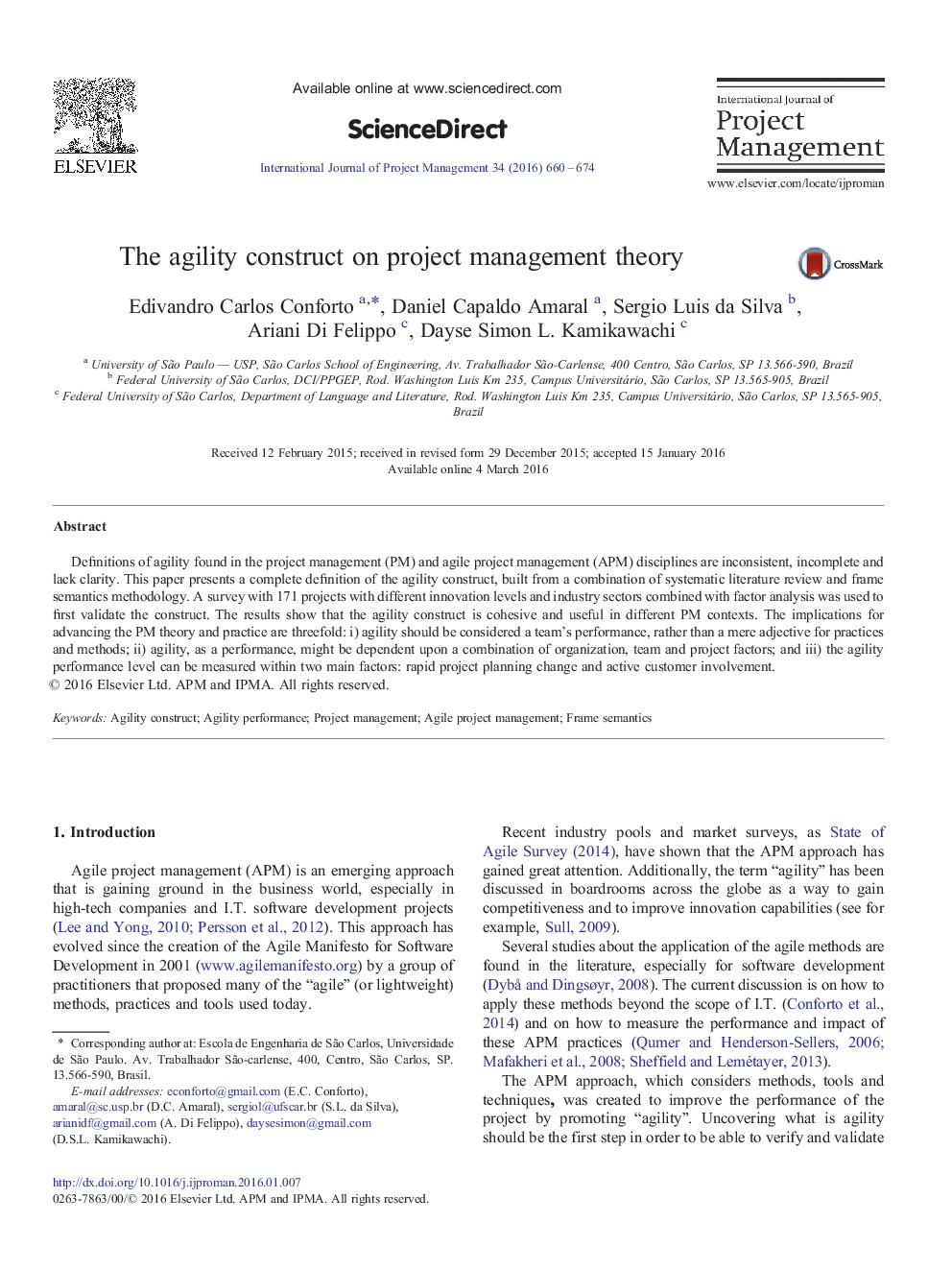| Article ID | Journal | Published Year | Pages | File Type |
|---|---|---|---|---|
| 275676 | International Journal of Project Management | 2016 | 15 Pages |
•A new and complete definition of agility was built based on frame semantic analysis.•Agility combines rapid project planning change and active customer involvement.•Agility is a team's ability not only an attribute of “agile methods or practices”.•Agility performance may not be a direct result from adopting “agile methods”.•Agility has different intensities and depends on multiple organization factors.
Definitions of agility found in the project management (PM) and agile project management (APM) disciplines are inconsistent, incomplete and lack clarity. This paper presents a complete definition of the agility construct, built from a combination of systematic literature review and frame semantics methodology. A survey with 171 projects with different innovation levels and industry sectors combined with factor analysis was used to first validate the construct. The results show that the agility construct is cohesive and useful in different PM contexts. The implications for advancing the PM theory and practice are threefold: i) agility should be considered a team's performance, rather than a mere adjective for practices and methods; ii) agility, as a performance, might be dependent upon a combination of organization, team and project factors; and iii) the agility performance level can be measured within two main factors: rapid project planning change and active customer involvement.
